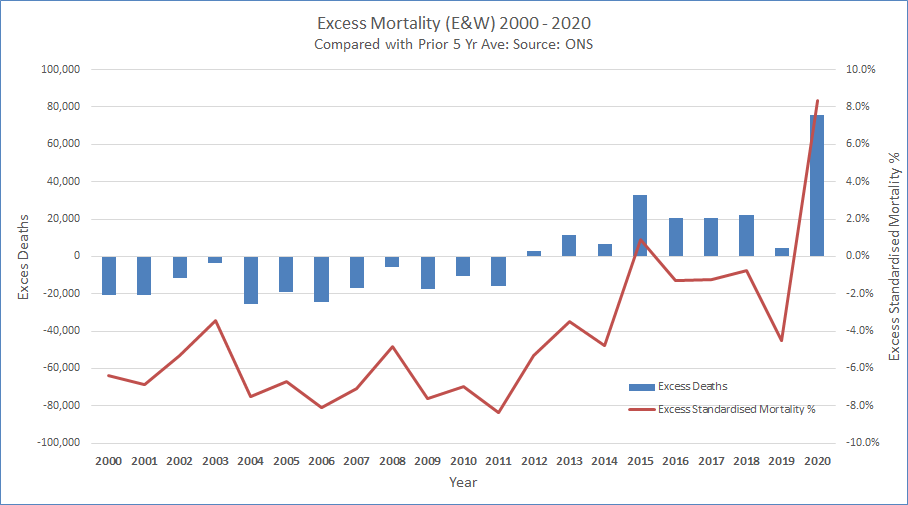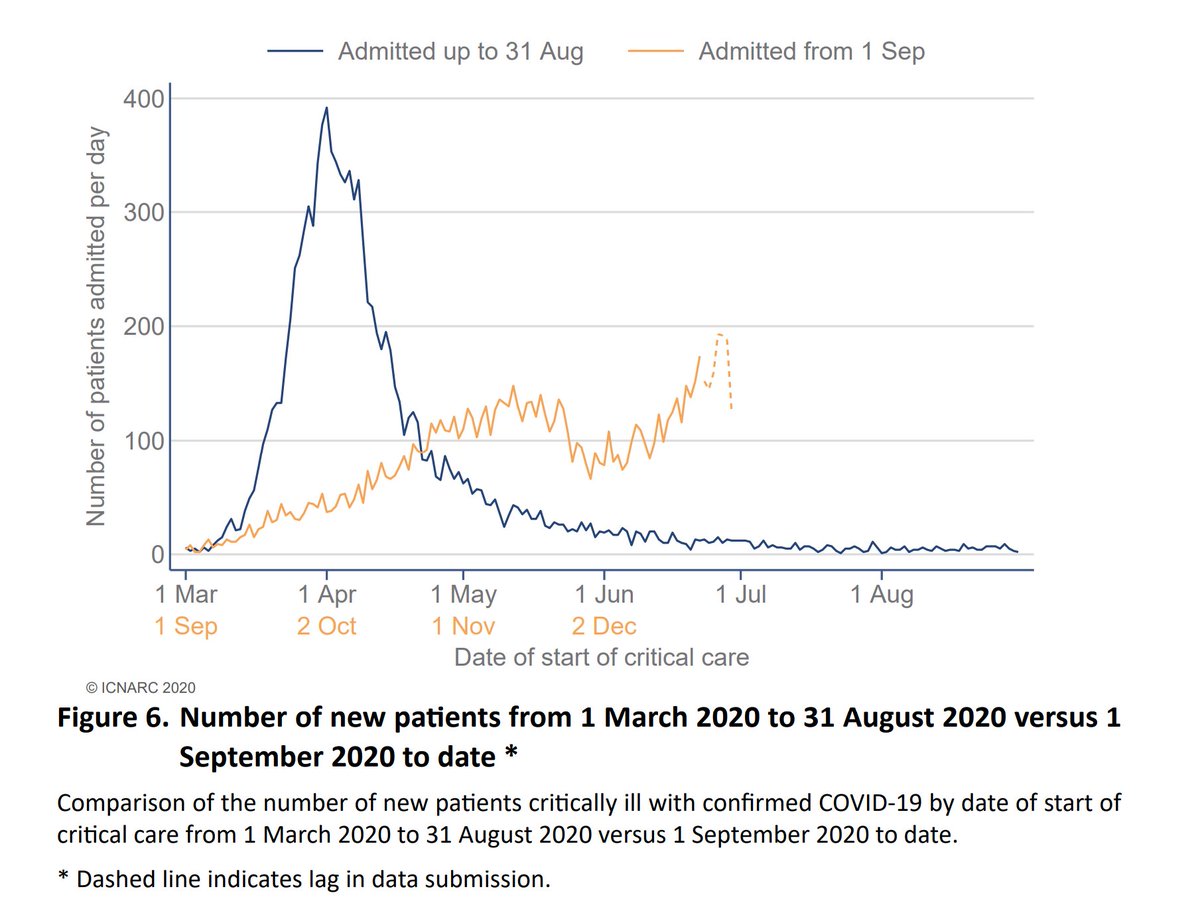
The @ONS has published an updated mortality series, with deaths and standardised mortality, now including 2020. Using the prior 5 year average, we can calculate excess deaths and mortality over recent years. 2020 is exceptionally bad on either measure. A short thread. 1/5 

Standardised mortality is the best measure, as it adjusts for population size and an ageing population. At +8.3% it compares badly with the previous average of -5.0% this century. Only one other year, 2015, was slightly positive (+0.9%), with an exceptionally bad flu year. 2/5
Excess deaths were negative in the first decade. As improvements in mortality then slowed, the effect of the ageing population has outweighed the lower level of improvement. Hence why we've recently seen more deaths, (and why excess deaths alone is an imperfect measure.) 3/5
Inevitably this type of analysis is done using calendar years. But the deterioration only started in mid March. By the time we get to mid March 2021, the cumulative effect for a full year is likely to be greater given the current trajectory of reported deaths. 4/5
Mid March is significant not only because it signifies a year since the pandemic took hold, but it is also when we expect deaths to be falling rapidly due to the effect of vaccinations, as noted in this paper published by @COVID19actuary yesterday. 5/5
https://twitter.com/COVID19actuary/status/1348603497705598980
• • •
Missing some Tweet in this thread? You can try to
force a refresh
















